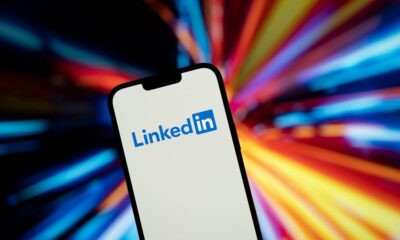People Buy People On LinkedIn Not Companies: Here’s Why

On LinkedIn, people buy into other people, not companies. LinkedIn is all about you, the leader. When people make decisions, it is based on who you are, how they feel about you and other emotional, sometimes intangible feelings. This is true for social media and in real life.
Gut reactions, good vibe, rapport — people build up a trust with you, or not as the case may be. That’s why authenticity is key. People will find out if you’re fake. And since people on LinkedIn buy into other people, that’s why the best course to get more business is to market your company through your personal page on LinkedIn.
I’ve written before about what I call “the Richard Branson effect,” which can easily be replaced with the Elon Musk effect, the Bill Gates effect or any other public figure in business. These types of company leaders have more engagement and followers on LinkedIn than their respective companies. One hundred times more people follow the leader and founder of Virgin Atlantic, Richard Branson, than the company itself.
People buy people. People follow people, not companies. Even when leaders like Michael Dell have fewer followers than their company page, they actually have more engagement levels for their posts.
As another example, if you look at the Microsoft company page on LinkedIn (and bearing in mind that they own LinkedIn), the company has 14 million followers, but sometimes its posts get literally zero comments. They tend to be boring company updates about diversity, the environment, Azure, the Surface products. Who cares?
So, you have to wonder, if Microsoft often gets such little engagement on LinkedIn, then how do small companies have a chance? You have to keep in mind that when the CEO of Microsoft, Satya Nadella, posts, he routinely gets hundreds of thousands of engagements. People buy into Satya, and when he talks about Microsoft, people listen.
They see more authenticity in Satya. It feels more personal. You can’t take the company to the pub, cafe or restaurant but you can take the CEO or Founder.
It’s often the best place to do business in a bar. This is where the real action happens and where the real “you” comes out. You have a drink, you relax, you build a rapport and you share. You then start trusting one another and that’s how business is done. You can’t take a company out for a drink.
I closed my physical office in Singapore, and I have all my meetings at the W Hotel’s WooBar. I invite people to come and meet me there as it’s a break for them away from their home or physical office in the business district.
Their decision of whether to outsource to my company is often based on how well they get along with me. It can of course go both ways. The ones who enjoy my sometimes polarizing personal brand often become my clients. The whole process is based on social selling, not hard selling.
Build a relationship socially with potential clients. Share the good, bad and ugly about yourself on LinkedIn. You then gain permission in other people’s view to share your company through your personal page on LinkedIn. People will come to trust you and buy your service because of you.
Ultimately, selling is about people, trust, rapport and relationships, and you can’t do that through a company website or a company page on LinkedIn; you can only do it through you and your personal page and brand.
So, my advice is don’t waste time on your LinkedIn company page, and instead focus on your LinkedIn personal page to see results. The examples of successful business personalities speak for themselves.
Forbes Business Council is the foremost growth and networking organization for business owners and leaders. Do I qualify?

















![New Report Highlights Key Tips to Maximize LinkedIn Performance [Infographic] New Report Highlights Key Tips to Maximize LinkedIn Performance [Infographic]](https://articles.entireweb.com/wp-content/uploads/2024/02/1707701164_New-Report-Highlights-Key-Tips-to-Maximize-LinkedIn-Performance-Infographic.webp-400x240.webp)
![New Report Highlights Key Tips to Maximize LinkedIn Performance [Infographic] New Report Highlights Key Tips to Maximize LinkedIn Performance [Infographic]](https://articles.entireweb.com/wp-content/uploads/2024/02/1707701164_New-Report-Highlights-Key-Tips-to-Maximize-LinkedIn-Performance-Infographic.webp-80x80.webp)
You must be logged in to post a comment Login